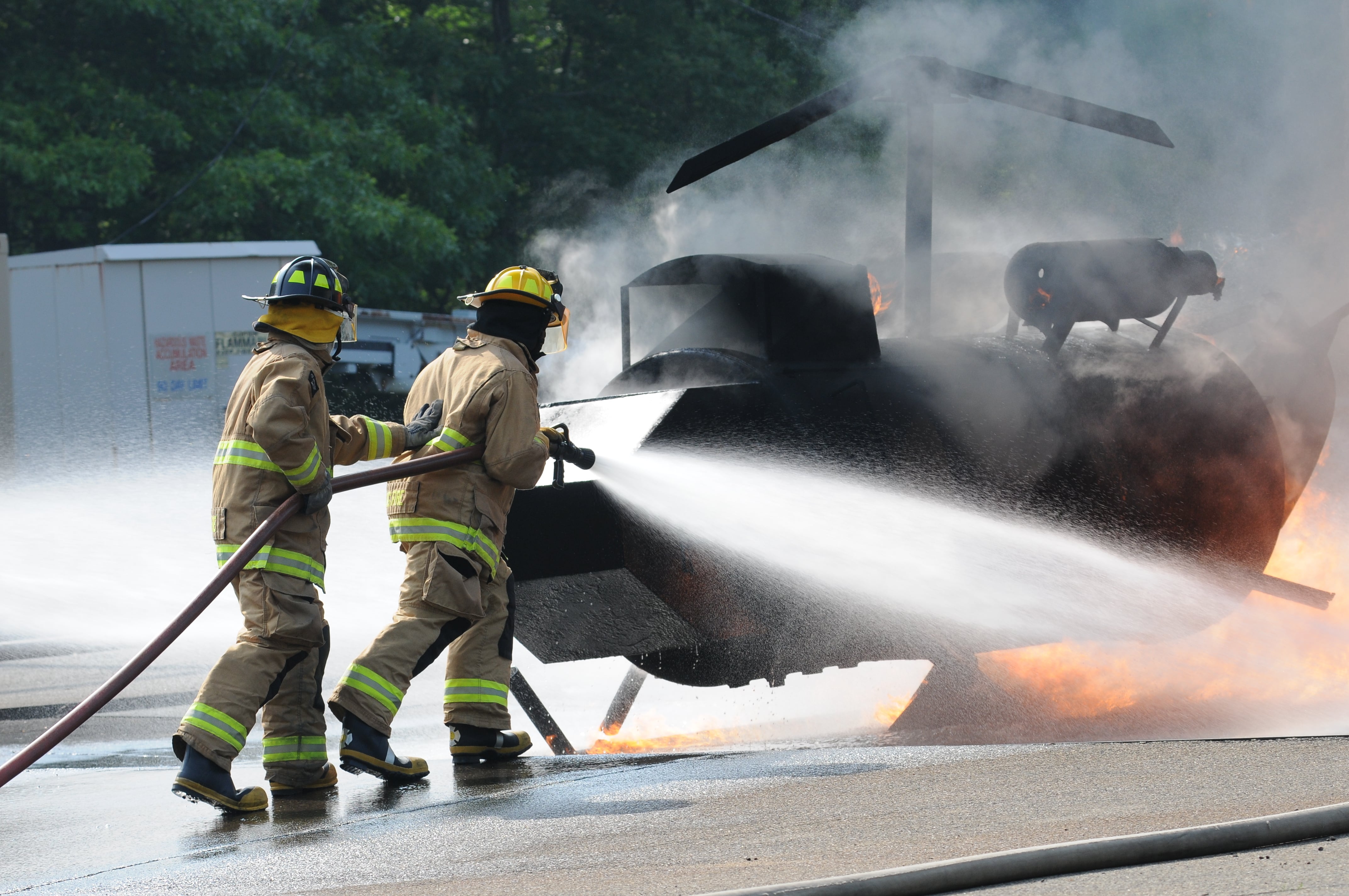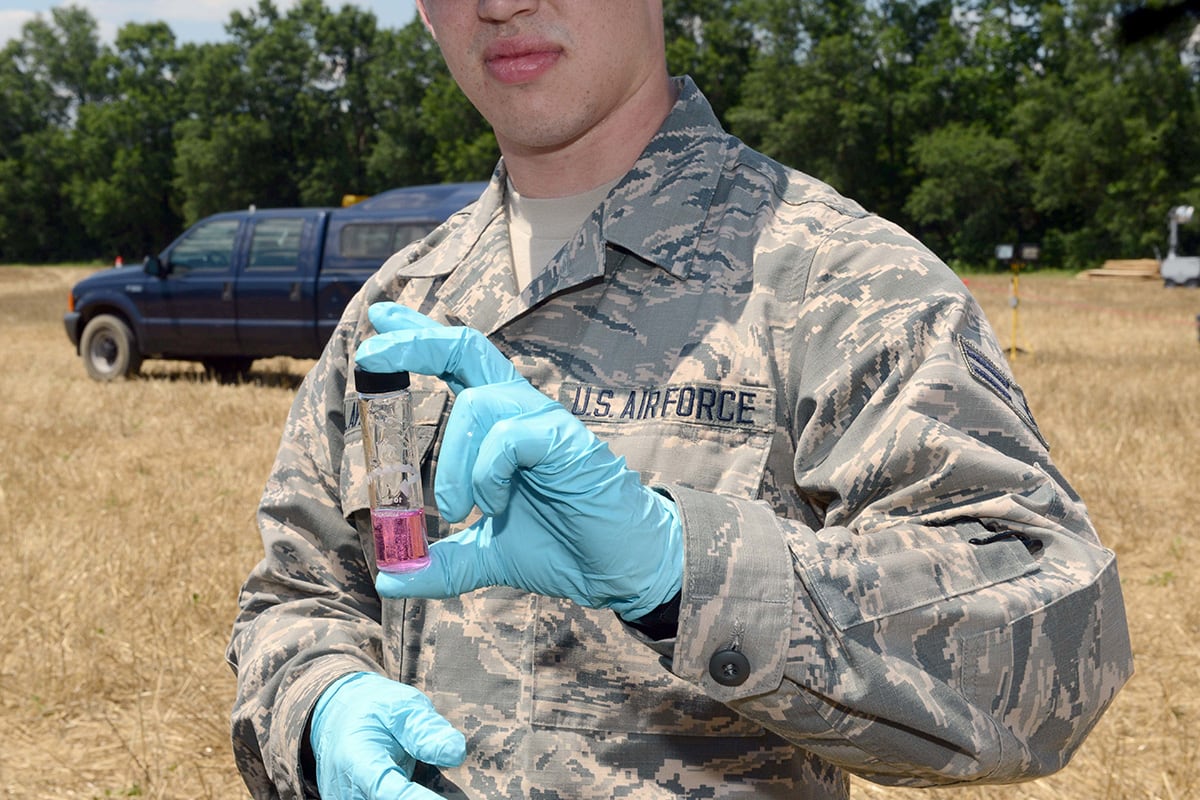A new searchable database compiled by Military Times from DoD-released data has raised a lot of questions from military personnel and families who lived on those locations.
In the March report, DoD named hundreds of water sites on bases around the world where some type of water source tested for higher-than-recommended levels of perfluorooctane sulfonate (PFOS) or perflourooctanoic acid (PFOA.)
The compounds are linked to cancers and birth defects that were concentrated in the foam the military has used to put out aircraft fires since the 1970s.
The report identified water sites such as an on-base drinking system; off-base drinking system and multiple water monitoring wells drilled on or near military property.
In a follow-up interview, Maureen Sullivan, deputy assistant secretary of Defense, Environment, Safety & Occupational Health, further explained the data and addressed key questions.
RELATED

Sullivan emphasized that since EPA’s health standards on the PFOA/PFOS exposure are just advisories, and have not been made into federal regulation, DOD is voluntarily complying where it owns the water, but the non-regulation has complicated efforts where DoD relies on an outside vendor or municipality.
Some of these foams have been used for decades. Did DoD ever test for this before, like in the ‘70s or the ‘80s?
“No, because there was no indication from EPA that they had concerns about it being in the drinking water. It was just a foam that we used,” Sullivan said. “The science on these two compounds really wasn’t emerging until much later. It wasn’t until EPA came out with [a 2012 monitoring rule] that they said “we’re interested in finding out if it’s pervasive in the drinking water.’ So that was our first indication that they were interested.”
From a DoD perspective, it seems there’s been some internal awareness, as early as the ‘90s?
“Correct. That was about the availability. So under a separate part of EPA – under the toxic substance control act, they have the authority on compounds entering commerce. They were evaluating whether or not they wanted to restrict the compound entering commerce. So we [DoD] were interested, if the compound was not going to be available in commerce, whether we would have the compound we needed to meet our firefighting needs.”
What are the long-term fixes?
Sullivan stressed that each site is different. Now, each location will be added to the EPA’s Superfund list. The long-term fix will include Preliminary Assessments and Site Inspections (called “PA/SI” in the database.) The studies will ultimately result in remedial actions including cleanup that could take up to a decade or more to complete.
Sullivan also explained the multiple types of contaminated sites DoD identified in the report and explained the different types of actions taken. Each base has slightly different solutions.
Sites of contamination:
Drinking water on base, where water was supplied by DoD: In these cases DoD has taken actions to cut off the contaminated drinking water supply from the population. For example, the database reports that the Army’s Belmont Armory in Michigan has a contaminated drinking water source. Bottled water has been provided to armory personnel and the base is looking into filtration systems.
Drinking water on base, water not supplied by DOD: In cases where DOD contracts water, such as from a local municipality, it has worked with the provider on a fix. At U.S. Army Garrison Benelux, in Belgium, for example. personnel are using bottled water until a longer-term fix can be found.
Drinking water off-base, where DoD was a source of contamination: DoD has worked with state and local health departments to address exposure. For example, the database reports that at the Army’s Camp Grayling training center in Michigan, contaminated water systems found on base were addressed by the Michigan Department of Health and Human Services and the department installed almost 60 filter systems.
Monitoring wells, both on-base and off-base: Sullivan stressed that not all the water locations identified were feeding into drinking water sources. At many locations, DoD tested groundwater sources by digging a monitoring well.
“A drinking water well is different from a groundwater monitoring well,” Sullivan said. “Not all groundwater is drinking water. We have sunk wells to look at, ‘Where is the groundwater, and what is the extent of the contamination?’”
RELATED

“But that water is not used for drinking,” Sullivan said. “It’s just to figure out what the scope of the groundwater is, how far it extends, [and] if there is something in that water, how far it is out. You may have a hot spot there and you’ve got to figure out how far has that contamination spread, [and] the impact of that compound spread.”
The solutions for each monitoring well varied. For example, at the Air National Guard base in Horsham, Pennsylvania, carbon filters have been added to DoD drinking water supply wells on base and to nearby private and municipal wells. DoD has also offered alternate water supplies to both.
Tara Copp is a Pentagon correspondent for the Associated Press. She was previously Pentagon bureau chief for Sightline Media Group.





